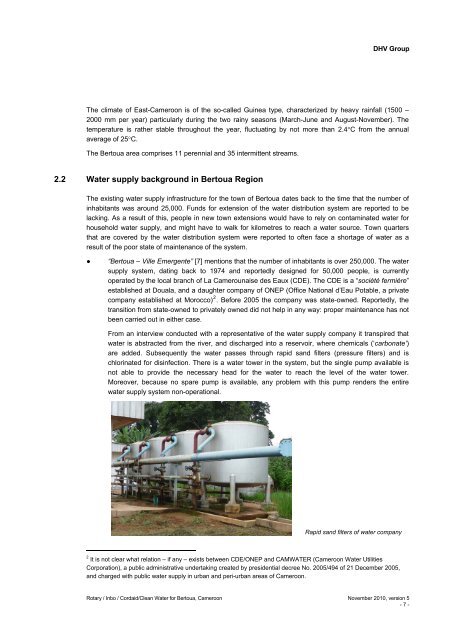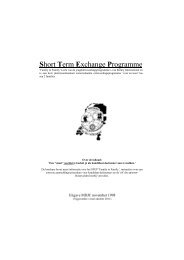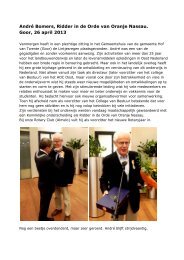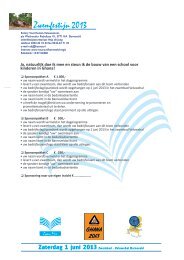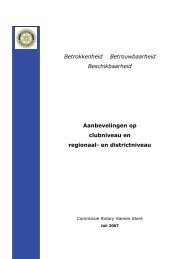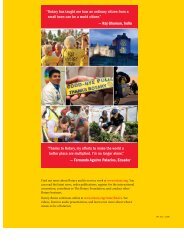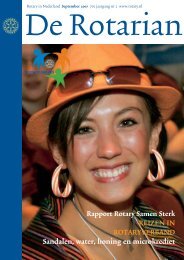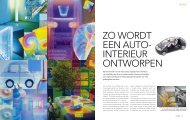Clean Water for Bertoua
Clean Water for Bertoua
Clean Water for Bertoua
Create successful ePaper yourself
Turn your PDF publications into a flip-book with our unique Google optimized e-Paper software.
DHV Group<br />
The climate of East-Cameroon is of the so-called Guinea type, characterized by heavy rainfall (1500 –<br />
2000 mm per year) particularly during the two rainy seasons (March-June and August-November). The<br />
temperature is rather stable throughout the year, fluctuating by not more than 2.4C from the annual<br />
average of 25C.<br />
The <strong>Bertoua</strong> area comprises 11 perennial and 35 intermittent streams.<br />
2.2 <strong>Water</strong> supply background in <strong>Bertoua</strong> Region<br />
The existing water supply infrastructure <strong>for</strong> the town of <strong>Bertoua</strong> dates back to the time that the number of<br />
inhabitants was around 25,000. Funds <strong>for</strong> extension of the water distribution system are reported to be<br />
lacking. As a result of this, people in new town extensions would have to rely on contaminated water <strong>for</strong><br />
household water supply, and might have to walk <strong>for</strong> kilometres to reach a water source. Town quarters<br />
that are covered by the water distribution system were reported to often face a shortage of water as a<br />
result of the poor state of maintenance of the system.<br />
<br />
“<strong>Bertoua</strong> – Ville Emergente” [7] mentions that the number of inhabitants is over 250,000. The water<br />
supply system, dating back to 1974 and reportedly designed <strong>for</strong> 50,000 people, is currently<br />
operated by the local branch of La Camerounaise des Eaux (CDE). The CDE is a “société fermière”<br />
established at Douala, and a daughter company of ONEP (Office National d’Eau Potable, a private<br />
company established at Morocco) 2 . Be<strong>for</strong>e 2005 the company was state-owned. Reportedly, the<br />
transition from state-owned to privately owned did not help in any way: proper maintenance has not<br />
been carried out in either case.<br />
From an interview conducted with a representative of the water supply company it transpired that<br />
water is abstracted from the river, and discharged into a reservoir, where chemicals (‘carbonate’)<br />
are added. Subsequently the water passes through rapid sand filters (pressure filters) and is<br />
chlorinated <strong>for</strong> disinfection. There is a water tower in the system, but the single pump available is<br />
not able to provide the necessary head <strong>for</strong> the water to reach the level of the water tower.<br />
Moreover, because no spare pump is available, any problem with this pump renders the entire<br />
water supply system non-operational.<br />
Rapid sand filters of water company<br />
2<br />
It is not clear what relation – if any – exists between CDE/ONEP and CAMWATER (Cameroon <strong>Water</strong> Utilities<br />
Corporation), a public administrative undertaking created by presidential decree No. 2005/494 of 21 December 2005,<br />
and charged with public water supply in urban and peri-urban areas of Cameroon.<br />
Rotary / Inbo / Cordaid/<strong>Clean</strong> <strong>Water</strong> <strong>for</strong> <strong>Bertoua</strong>, Cameroon November 2010, version 5<br />
- 7 -


